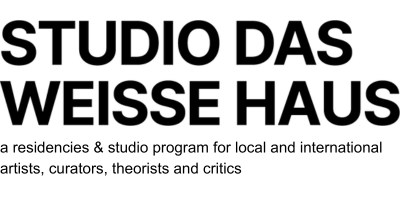Weekly Conversations... with Marit Wolters

Marit Wolters holds BA in Art History and German Studies from TU Dresden, as well as diplomas from Hochschule für Bildende Künste Dresden (Sculpture and Architecture Related Media with Monika Brandmeier) and University of Applied Arts Vienna (Transmedia Art with Brigitte Kowanz). She has taken part in numerous art residencies abroad, in 2019 she’s going to spend 3 months at Red Gate Gallery in Beijing, China.
When it comes to your artworks, you seem to have a very wide range – sculptures, architecture, installations, videos – what feels to be the closest to you?
It fits pretty well to the fact that I studied at Transmedia Art class with Brigitte Kowanz. I choose the medium according to what idea I’m working on – it needs to be communicated clearly. Principally that could be any medium. At the moment I’m mostly working with sculptures. My interest has always been connected to our immediate surroundings – I did a lot of research on architecture and on how our body reacts to certain environments. I focus on working with various construction materials – I’m trying to set them free somehow in their use, to see them differently than we’re used to in daily life.
You’ve recently spent a few months in residency in Dessau – what were you working there on?
I continued my research on aerated concrete at Stiftung Bauhaus Dessau. There was a big scientific research program mostly about smart materials, in collaboration with many partners, such as Fraunhofer Institut or Universität der Künste Berlin. We discussed what it means for materials to be smart. To me smartness or intelligence is being created out of communication. Communication processes, in a broader meaning, lead us to better understanding of the world’s existence. That’s why I experiment with materials in a working mode I would call dialogic – I give an input and the material responses. In the ideal case the dialogue continues and the resulting form is the outcome of this dialogue in which both interlocutors are respected in the same way.
Can you somehow compare the art world in Austria and Germany now that you’ve, as a native German, spent a few years living in Vienna?
While I was studying at University of Applied Arts, to me it was important that we’ve always had a close connection between design, architecture and fine arts. I didn’t feel the need to explain my different approaches to fine arts anymore. What I like about the Viennese art scene is that it has a decent size. It’s active, you have a lot going on at the moment, but as a young artist you can’t get lost so easily as for example in Berlin. On the other side it is a bit less international. However, I try to keep the spirit by travelling myself and then being happy to be back home in Vienna. Not to forget that the state really tries to support young artists by acquisitions and grants. That helped a lot in my first steps on the way to become a freelance artist.
Do we get the chance to see your works exhibited somewhere any time soon?
I’m having an exhibition, opening on Thursday, November 9 at Whitedwarf Projects in Seidlgasse 14 in Vienna. I’m going to show a video piece of the aerated concrete. On Saturday this week (October 21) I’m going to hold a talk at Stiftung Bauhaus Dessau. Me and my colleagues Thomas Hitchcock and Christina Romirer are also planning on having an opening at the memorial for Peter Alexander at Peter Alexander Platz in Grinzing next spring. We’ve been working on it for the past few years and we are happy to conclude the project soon.
Interviewer for studio das weisse haus: Simona Lacinová
